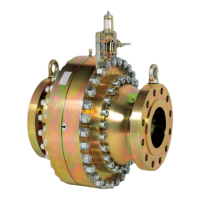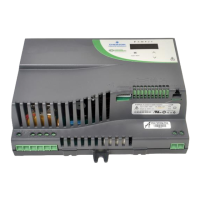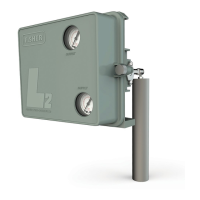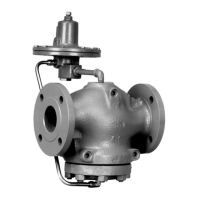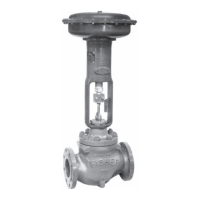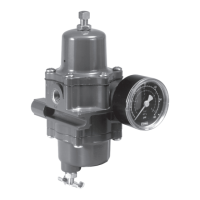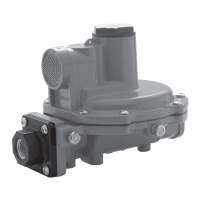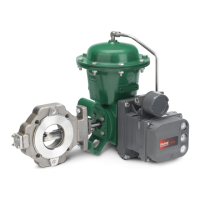


Do you have a question about the Emerson FloBoss 107 and is the answer not in the manual?
| Model | FloBoss 107 |
|---|---|
| Category | Controller |
| Manufacturer | Emerson |
| Communication Ports | RS-232, RS-485, Ethernet |
| Input Channels | Up to 16 |
| Output Channels | Up to 8 |
| Inputs | Digital and analog inputs |
| Outputs | Relay and analog outputs |
| Communication Protocols | Modbus |
| Power Supply | 24 VDC |
| Operating Temperature | -40°C to 70°C |
| Display | LCD |
Outlines the content and structure of the manual, defining its scope and purpose.
Provides a high-level description of the FB107 flow computer's functionality and capabilities.
Details the physical components, modules, and configurations of the FB107 hardware.
Explains the firmware's features, including databases, applications, and operational modes.
Describes the ROCLINK 800 software used for configuring, monitoring, and calibrating the FB107.
Provides a description of the FB107's electronic components, including the real-time clock and diagnostics.
Explains the gas and liquid calculation methods supported by the FB107 for flow measurement.
Recommends solutions for enhanced data security using industrial routers with VPN and firewall security.
Lists related documents for additional and most-current information on FB107 modules.
Covers general guidelines for successful installation, including environmental and site considerations.
Details the procedures for installing the FB107 base unit and its expansion rack.
Explains the function of the memory backup battery and super-capacitor for data retention.
Describes the CPU module, its connections, firmware, and built-in features.
Explains how license keys grant access to applications or optional firmware functionality.
Guides through the initial checks, power application, and basic operation setup of the FB107.
Describes the FB107's power terminals and how external input power is converted to required voltage levels.
Provides guidance on identifying and calculating power requirements for FB107 configurations.
Details how to connect the FB107 to power, I/O devices, and communication devices safely.
Explains the procedure for wiring power directly to the CPU module or via the AUX PWR IN connection.
Explains how I/O options monitor, control, and acquire data from external devices via the microprocessor.
Provides instructions for installing I/O modules into the FB107 base unit or expansion rack.
Details the procedure for safely removing I/O modules from the FB107.
Outlines the site- and application-dependent requirements for I/O wiring installations.
Guides users on selecting the appropriate type of input or output using ROCLINK 800 software.
Explains how analog inputs monitor current loop and voltage input devices and their configuration.
Describes the 8-point AI/DI module, providing eight user-selectable analog or digital inputs.
Details analog outputs providing a 4 to 20 mA current source for powering analog loop devices.
Explains how discrete inputs monitor the status of relays, switches, and other two-state devices.
Details discrete outputs providing two-state outputs to energize solid-state relays and power electrical loads.
Describes the DOR module providing control over various discrete output field devices.
Explains how pulse inputs process signals from pulse-generating devices for rate or total accumulation.
Describes the APP 485 module for localized applications operating in an RS-485 environment.
Details the RTD input on the CPU for monitoring temperature signals from an RTD source.
Describes the 6-point AO/DO module providing analog outputs or discrete outputs.
Explains the HART module for communicating with HART devices using the HART protocol.
Describes the 3-channel RTD module enabling monitoring of various RTD sensors.
Details the IEC 62591 module for communicating with WirelessHART devices.
Lists related product data sheets for additional information on FB107 modules.
Introduces the built-in communication ports and optional communication modules for the FB107.
Provides instructions for installing and removing communication modules in the FB107 base unit slots.
Details the wiring for the LOI port, providing a direct, local link between the FB107 and a PC.
Explains the wiring for EIA-485 communications, used for multi-drop applications over long distances.
Details the wiring for EIA-232 communications, used for point-to-point serial connections over short distances.
Describes the external LCD Touchpad that provides a user interface for the FB107.
Explains the ECM module providing Ethernet and USB 2.0 ports for enhanced communications.
Details the Dial-Up Modem module for communication over a public switched telephone network (PSTN).
Describes the NRM for wireless communication and data transfer within a Distributed RTU Network.
Lists documents for additional and most-current information on FB107 communication modules.
Explains the MVS module's role in providing differential, static pressure, and temperature inputs for flow calculations.
Describes the DVS for static and differential pressure measurement for orifice flow calculations.
Explains the PIM for providing pressure inputs and pulse counts for AGA7 flow calculations.
Lists documents for additional and most-current information on FB107 sensors and transducers.
Provides general guidelines and required tools for diagnosing and resolving FB107 problems.
Explains how the FB107's graphical user interface provides visual clues to help diagnose problems.
Offers brief topical checklists for common issues related to LEDs, serial communications, and I/O.
Presents step-by-step procedures for troubleshooting specific FB107 issues like resets and reconfigurations.


